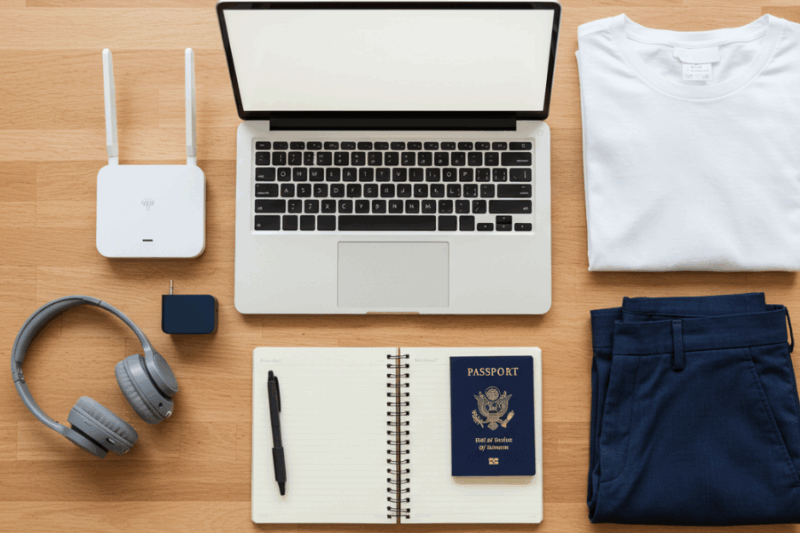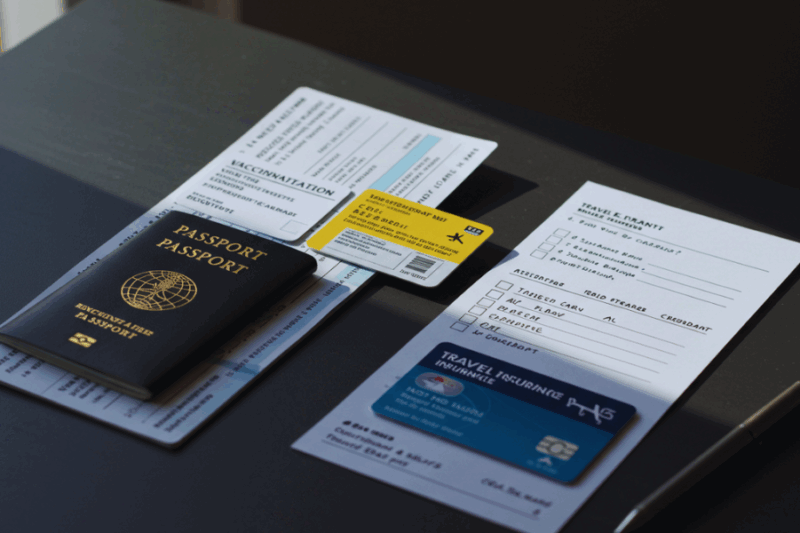In 2025, smartphone apps are indispensable for travelers, streamlining navigation, communication, and planning. These tools save time, money, and stress, making trips smoother whether you’re backpacking or on a luxury getaway. Here are the top five must-have apps for travelers, with practical tips to maximize their use.

1. Google Maps
Why It’s Essential: Google Maps offers reliable navigation, offline maps, and real-time transit info, perfect for exploring new cities or remote areas.
Features:
- Download offline maps for areas with poor Wi-Fi (e.g., rural Thailand).
- Find restaurants, ATMs, or attractions with user reviews and photos.
- Get public transport schedules (e.g., Tokyo’s subway) or walking routes.
How to Use: Before your trip, download maps for your destination (search city name, tap “Download”). Save key spots (hotels, markets) with pins. Use “Explore” to discover nearby cafes or sights.
Cost: Free.
Tip: Enable location sharing with travel partners for safety. Use Street View to preview destinations like Siem Reap’s markets.
2. Google Translate
Why It’s Essential: Breaks language barriers with instant translations, crucial for non-English-speaking countries like Japan or Brazil.
Features:
- Translate text via camera (e.g., menus in Chinese).
- Offline translation for 59 languages (download packs in advance).
- Conversation mode for real-time bilingual chats.
How to Use: Download offline languages for your destination. Point your camera at signs or menus for instant translations. Practice phrases like “thank you” or “where’s the bathroom?” to connect with locals.
Cost: Free.
Tip: Save common phrases in the app’s phrasebook for quick access. In markets, use it to bargain politely.
3. TripIt
Why It’s Essential: Organizes your travel itinerary in one place, syncing flights, hotels, and activities for easy access.
Features:
- Auto-imports bookings from emails (flights, rentals, tours).
- Shares itineraries with family or friends for safety.
- Provides real-time flight alerts and gate changes.
How to Use: Forward confirmation emails to [email protected] to build your itinerary. Add manual entries for cash bookings (e.g., hostels). Check flight status offline during travel.
Cost: Free (basic); $49/year for Pro (real-time alerts, refunds).
Tip: Use TripIt to store digital copies of passports or visas. Sync with Google Calendar for reminders.
4. Grab
Why It’s Essential: Southeast Asia’s leading ride-hailing and food delivery app, offering safe, affordable transport in cities like Bangkok or Manila.
Features:
- Book taxis, motorbikes, or private cars (e.g., $2-5 for a Bangkok ride).
- Order street food or restaurant meals ($1-5) for delivery.
- Cashless payments via card or mobile wallet.
How to Use: Download before arriving, link a card, and set your pickup location. Verify driver details before boarding. Use for airport transfers or late-night rides to avoid scams.
Cost: Free to download; rides vary by city/distance.
Tip: In rural areas, book motorbikes for narrow roads. Compare prices with local taxis but prioritize Grab for safety.
5. XE Currency
Why It’s Essential: Provides real-time exchange rates for budgeting and bargaining, crucial in cash-heavy destinations like Cambodia or India.
Features:
- Converts 180+ currencies offline (after syncing).
- Tracks historical rates to spot trends.
- Simple interface for quick calculations.
How to Use: Update rates before your trip for offline use. Check conversions when bargaining at markets (e.g., $1 = 4,000 KHR in Phnom Penh). Use it to verify ATM or vendor rates.
Cost: Free (basic); $4.99 for ad-free pro version.
Tip: Set your home currency and frequent destinations for fast access. Carry small local bills ($1-5 equivalent) for exact payments.
Why These Apps in 2025?
These apps are chosen for their reliability, global utility, and free (or low-cost) access, aligning with 2025’s travel trends: digital-first planning, safety concerns, and budget consciousness. With tourism booming and connectivity improving (e.g., eSIMs, 5G), they’re essential for navigating cities, communicating, and staying organized.
Practical Tips
- Pre-Trip Prep: Download apps and test them at home. Save offline content (maps, translations) to avoid data costs.
- Storage and Battery: Clear phone space (2-3GB) for apps and photos. Carry a 10,000mAh power bank ($15-25) for all-day use.
- Connectivity: Get a local SIM ($5-10 for 5-10GB) or eSIM (Airalo) for data. Use free Wi-Fi in cafes sparingly for security.
- Backup: Store app logins in a password manager (e.g., LastPass). Back up itineraries to Google Drive.
- Safety: Avoid sharing sensitive info on public Wi-Fi. Use apps like Grab for verified drivers in unfamiliar cities.
Final Thoughts
These five apps—Google Maps, Google Translate, TripIt, Grab, and XE Currency—equip you to travel smarter, safer, and cheaper. Start downloading them today, set up offline features, and practice their functions to hit the ground running. Whether wandering Phnom Penh’s markets or exploring Paris’s cafes, these tools will keep you connected, organized, and ready for adventure. Travel with confidence!



